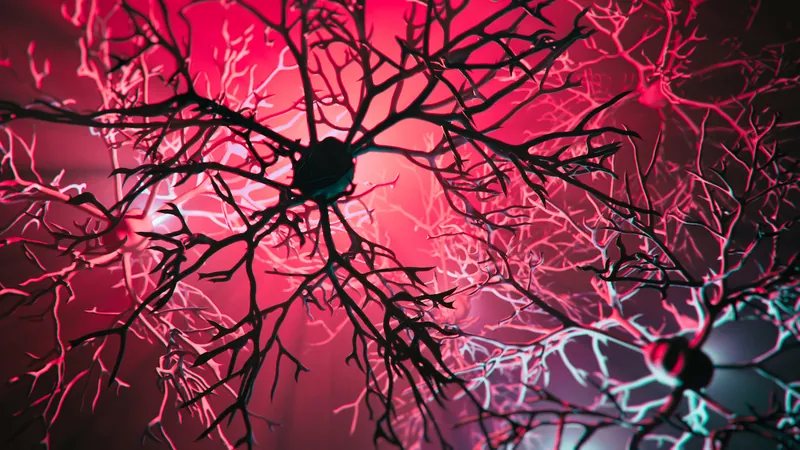
Revolutionary Regenerative Therapy Could Slow Huntington’s Disease Progression!
2025-04-07
Author: Jia
Revolutionary Regenerative Therapy Could Slow Huntington’s Disease Progression!
Exciting new research out of the University of Rochester Medical Center (URMC) reveals a groundbreaking strategy that may slow the devastating progression of Huntington’s disease, a debilitating genetic disorder affecting movement and cognition. Utilizing a mouse model, scientists have uncovered that the adult brain possesses the remarkable ability to generate new neurons that can seamlessly integrate into existing motor control circuits—a finding that could usher in a new era for neurodegenerative disease treatment.
Dr. Abdellatif Benraiss, a key figure in this study published in Cell Reports, shared his optimism: “Our research indicates that we can stimulate the brain’s innate capabilities to produce new neurons, which can contribute to restoring movement control.” This innovative approach highlights the potential to leverage the brain's own cellular mechanisms for repair, not only for Huntington’s but possibly for a variety of disorders linked to neuronal loss.
For decades, the prevailing belief held that new neurons could not be generated in adult brains. Nonetheless, recent discoveries have established the presence of progenitor cells nestled in specialized brain regions, which can produce new neurons. After birth, these cells typically shift their focus from neuron production to creating supportive glial cells, leaving critical brain regions like the striatum particularly vulnerable to conditions such as Huntington’s disease. This condition, characterized by the selective death of medium spiny neurons, leads to the characteristic motor dysfunctions and cognitive decline.
This innovative study builds on earlier findings in the 1980s, where researchers, including Dr. Steve Goldman, explored neuroplasticity in songbirds. Remarkably, these birds show an ability to grow new neurons as they learn to sing new melodies, suggesting an unforeseen adaptability in the brain. Techniques employed in the URMC study revealed that two proteins, brain-derived neurotrophic factor (BDNF) and Noggin, could stimulate the production of new neurons not just in mice but also in primate models.
By using advanced genetic tagging, the researchers were able to monitor the progress of these new neurons as they were created and followed their path toward integration into the striatum. The findings were illuminating: when these newly formed neurons were chemically activated, they worked harmoniously within the striatal networks, reviving the functions lost to disease.
Moreover, through cutting-edge optogenetic techniques, which allow for the manipulation of specific cell populations with light, the scientists confirmed that these new neurons were not just present—they were active participants in the circuits responsible for motor control. “We have demonstrated that these reclaimed neurons are fully functional and contribute to active movement behaviors,” stated Dr. Jose Cano, a leading researcher on the project.
The implications of these findings are profound. The team concluded that encouraging neurogenesis in the adult brain could not only replace lost neurons but also rejuvenate the complex communication networks critical for motor function. Researchers believe that treatments based on this discovery could herald a new approach in combating Huntington’s disease, with potential applications for other neurodegenerative disorders.
“The persistence of progenitor cells in adult primate brains opens up exciting possibilities for regenerative therapies,” Dr. Benraiss emphasized, suggesting that these findings might pave the way for innovative strategies to manage not just Huntington's but a spectrum of diseases that involve neuronal loss.
As science marches forward, this pioneering research offers hope to countless individuals affected by debilitating neurodegenerative conditions. The question remains: Could this be our first glimpse at a viable path toward healing the damaged brain? Stay tuned for what could be a revolutionary breakthrough in medical research!





 Brasil (PT)
Brasil (PT)
 Canada (EN)
Canada (EN)
 Chile (ES)
Chile (ES)
 Česko (CS)
Česko (CS)
 대한민국 (KO)
대한민국 (KO)
 España (ES)
España (ES)
 France (FR)
France (FR)
 Hong Kong (EN)
Hong Kong (EN)
 Italia (IT)
Italia (IT)
 日本 (JA)
日本 (JA)
 Magyarország (HU)
Magyarország (HU)
 Norge (NO)
Norge (NO)
 Polska (PL)
Polska (PL)
 Schweiz (DE)
Schweiz (DE)
 Singapore (EN)
Singapore (EN)
 Sverige (SV)
Sverige (SV)
 Suomi (FI)
Suomi (FI)
 Türkiye (TR)
Türkiye (TR)
 الإمارات العربية المتحدة (AR)
الإمارات العربية المتحدة (AR)